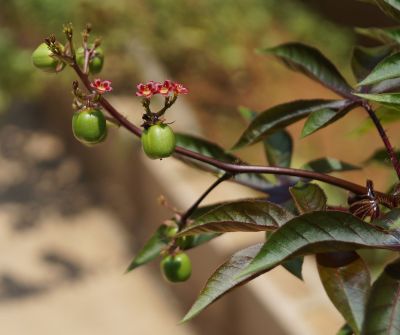Despite its toxicity, Jatropha curcas can be processed to give rise to many products, such as a high-quality biodiesel fuel from the seeds. The residue left after processing can be used as biomass for fertiliser, animal fodder and power generation. This tropical plant can grow in wastelands and the desert, thus contributing to carbon dioxide sequestration in lands where food production is not possible.
The characterisation of a genetically elite germplasm for Africa, Asia and Latin America was taken up by the EU-funded 'Jatropha curcas applied and technological research on plant traits' (
JATROPT) project. Scientists aimed to document the global genetic diversity of jatropha, and investigate improved methods of cultivation.
JATROPT researchers analysed the global biodiversity of jatropha using over 500 DNA markers. High genetic diversity was found in South America, where several non-toxic cultivars were also discovered.
Agricultural trials demonstrated that jatropha plants in India and Madagascar have good yield potential. Nitrogen, irrigation and planting density were factors that played a key role in early growth and seed and oil yield.
Agronomic modelling revealed that using 30 % of land for jatropha cultivation and 70 % for food production will not have a significant impact on food security.
Project members developed a new high-density planting system using low-growing genotypes that flower for longer periods and can be harvested mechanically. This new agronomic system for jatropha cultivation has the potential to revolutionise the farming of this biofuel crop.
The comprehensive approach to cultivation embodied by JATROPT holds promise to make jatropha a valuable new crop for production of biofuel and biomass. In particular, the focus on genetic diversity, non-toxic strains and agronomic considerations will contribute to widespread uptake of this potentially valuable crop.

